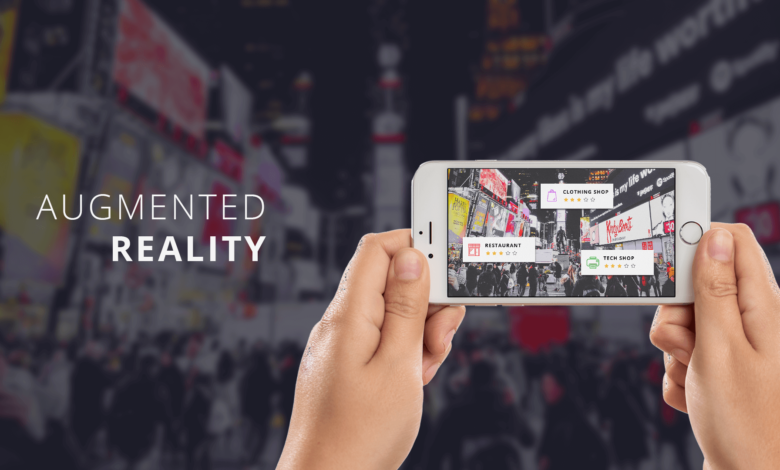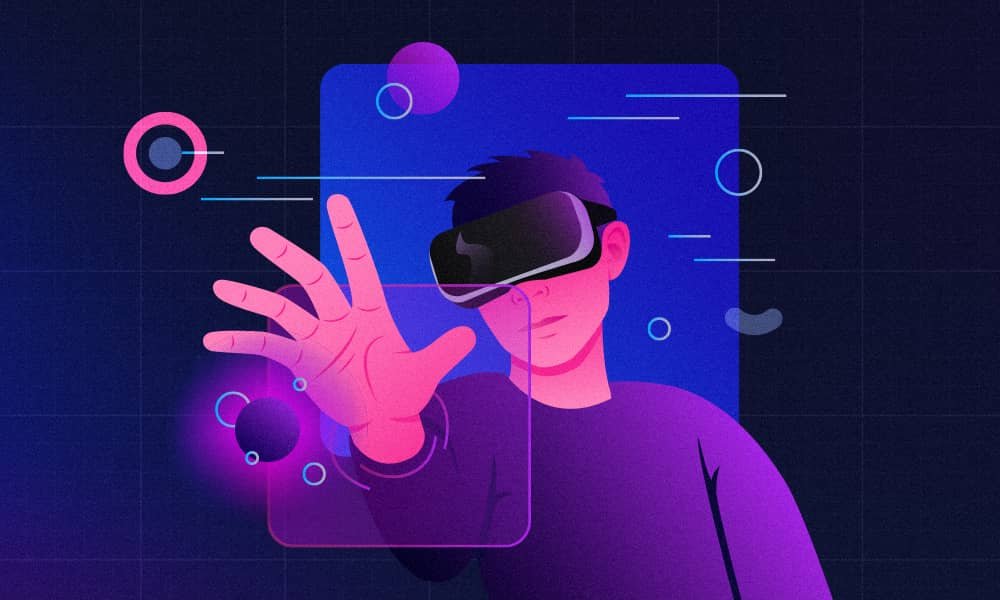What is Augmented Reality and Advantage of Augmented Reality 2023

Do you know What is Augmented Reality and Advantage of Augmented Reality 2023? Augmented reality (AR) is a technology that enhances the user’s real-world experience by overlaying digital information on top of it. AR is often experienced through a smartphone or tablet, but can also be used with specialized AR glasses or headsets.
Explore the Contents
ToggleIntroduction
AR technology is also used in fields such as education, medicine, and manufacturing. In education, AR can provide interactive experiences that make learning more engaging and immersive. For example, an AR app can display 3D models of the human body that students can explore and interact with. In medicine, AR can be used for surgical training or to visualize and plan surgeries. In manufacturing, AR can be used for training and maintenance, allowing workers to see instructions and information overlaid on the equipment they are working on.
Another example of AR is the IKEA Place app, which allows users to see how furniture will look in their home before making a purchase. Users can select a piece of furniture from IKEA’s catalog and use their smartphone camera to place the furniture in their actual room. The app uses AR technology to display a 3D model of the furniture at the correct scale and perspective, allowing the user to see how it will fit and look in their space.
Read More: How to Use Augmented Reality to Build Brand Loyalty
The advantage of augmented reality

Augmented Reality (AR) is a technology that superimposes digital content onto the real world, allowing users to experience a blended reality that combines both virtual and physical elements. In recent years, AR has become increasingly popular due to its ability to enhance various industries such as education, entertainment, retail, and more. In this article, we will discuss the advantages of augmented reality in detail.
Enhancing the Retail Industry
AR technology has revolutionized the retail industry, enabling customers to experience products before making a purchase. By using AR, customers can try on clothes and accessories virtually, visualize furniture in their home, and even see how makeup products will look on their face. This not only improves the shopping experience but also reduces the number of returns, ultimately benefiting both customers and retailers.
Improving Education and Training
AR can enhance traditional education and training methods by providing a more engaging and interactive experience for learners. For instance, students can learn about historical events by experiencing them in augmented reality, or they can visualize complex scientific concepts such as anatomy or physics. AR technology can also be used to simulate training scenarios for professions such as military, medical, or aviation, allowing trainees to gain valuable experience without the risk of real-world consequences.
Enhancing the Entertainment Industry
The entertainment industry has been greatly impacted by AR, providing users with immersive experiences that were previously impossible. AR technology can be used in video games, movies, and even theme parks to create more engaging and interactive experiences. For instance, AR can be used to bring characters to life and make them interact with the real world, creating a more immersive and memorable experience for users.
Improving Advertising and Marketing
AR can be a powerful tool for advertisers and marketers, enabling them to create more engaging and interactive campaigns. By using AR, advertisers can provide users with a virtual experience that showcases their products or services. This not only creates a more memorable experience for users but also increases the likelihood of them making a purchase.
Enhancing the Healthcare Industry

AR technology can be used to improve healthcare by enabling doctors to visualize medical data in real-time. For instance, doctors can use AR to view a patient’s medical history, allowing them to make more informed decisions. Additionally, AR can be used to simulate medical procedures, allowing doctors to gain valuable experience before performing them on patients.
Improving Product Design and Development
AR can be used to improve product design and development by enabling designers to create virtual prototypes. By using AR, designers can see how their products will look and function in the real world before creating physical prototypes. This not only saves time and money but also allows designers to make more informed decisions about the design of their products.
Enhancing Travel and Tourism
AR can be used to enhance the travel and tourism industry by providing users with virtual tours of destinations. By using AR, users can explore different locations and landmarks virtually, allowing them to make more informed decisions about where they want to travel. Additionally, AR can be used to enhance the experience of visiting museums or other cultural attractions, providing users with more information about the exhibits they are viewing.
Improving Real Estate

AR can be used to improve the real estate industry by enabling buyers to visualize properties virtually. By using AR, buyers can see how furniture will look in a home, visualize renovations, and even see how the view from a window will look. This not only saves time and money but also provides buyers with a more realistic representation of the property they are considering.
Enhancing Industrial and Manufacturing Processes
AR can be used to enhance industrial and manufacturing processes by providing workers with real-time information and guidance. For instance, workers can use AR to view digital overlays of equipment or machines, allowing them to identify potential issues or perform maintenance tasks more efficiently. AR can also be used to provide workers with step-by-step instructions, reducing errors and improving productivity.
Improving Customer Service
AR technology can be used to improve customer service by providing customers with virtual support. For instance, customers can use AR to receive visual instructions on how to assemble or use a product, reducing the need for customer service representatives. Additionally, AR can be used to provide customers with virtual assistance in real-time, allowing them to receive immediate support and reducing wait times.
Enhancing Safety and Security

AR technology can be used to enhance safety and security by providing workers with real-time information about potential hazards or security threats. For instance, workers can use AR to view digital overlays of potential dangers or security risks, allowing them to take appropriate action to prevent accidents or breaches. Additionally, AR can be used to provide workers with virtual training on safety procedures, reducing the risk of accidents or injuries.
Improving Accessibility
AR technology can be used to improve accessibility by providing users with virtual experiences that are more inclusive. For instance, AR can be used to provide users with virtual tours of inaccessible locations such as historical sites or museums. Additionally, AR can be used to provide users with visual aids or real-time translation, improving access to information and reducing language barriers.
Enhancing Collaboration and Communication
AR technology can be used to enhance collaboration and communication by providing users with real-time virtual interactions. For instance, teams can use AR to collaborate on designs or projects, allowing them to see and interact with virtual prototypes or visualizations. Additionally, AR can be used to provide remote workers with virtual interactions with colleagues, reducing the need for travel and improving productivity.
Read More: Virtual and Augmented Reality: The Future of Entertainment and Education in 2023
Improving Sustainability
AR technology can be used to improve sustainability by providing users with virtual experiences that promote eco-friendliness. For instance, AR can be used to provide users with virtual tours of sustainable buildings or eco-friendly products. Additionally, AR can be used to educate users on sustainable practices or provide virtual simulations of the effects of climate change, increasing awareness and encouraging environmentally-friendly behavior.
Conclusion
the advantages of augmented reality are numerous and span across various industries. AR technology provides a more engaging and interactive experience for users, enhancing everything from education and training to entertainment and advertising. Additionally, AR can improve decision-making processes and save time and money in product design and development
augmented reality technology provides numerous advantages across various industries. From enhancing the retail industry to improving education and training, AR technology is revolutionizing the way we experience the world. As AR technology continues to evolve, we can expect to see even more innovative applications and benefits in the future.











